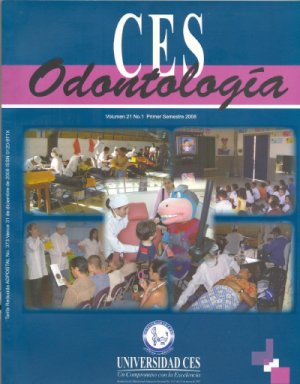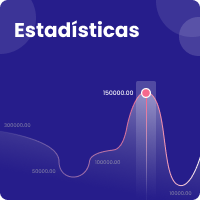Acción e influencia del bruxismo sobre el sistema masticatorio: Revisión de literatura
Resumen
El bruxismo afecta un gran porcentaje de la población. A pesar de las investigaciones realizadas con el objetivo de conocer su curso, no es bien conocido y por tanto no es bien tratado debido a su etiología multifactorial. Las alteraciones patológicas, como hábitos orales, maloclusiones, malas condiciones sistémicas y trastornos en las etapas del sueño, hacen que aumente el tono muscular por estímulo de estructuras cerebrales y diferentes neurotransmisores que se relacionan con el bruxismo nocturno. La actividad rítmica de los músculos masticatorios, son interpretadas por los sistemas de controles superiores generando cambios en las funciones normales. Como consecuencias de estas alteraciones se pueden presentar mialgias, desgaste o destrucción de los dientes, daños periodontales y articulares. Esta revisión analiza signos, síntomas y la etiopatogenia, desde el punto de vista histológico, estructural y funcional, la relación con los sistemas de control superior y sus manifestaciones a nivel dental, muscular, la ATM y el periodonto. El conocimiento de estos factores, permitirá al clínico guiarse en el diagnóstico y tratamiento considerando las condiciones de cada individuo. Podemos concluir que la cavidad oral actúa según el estado general del paciente, depende de las afecciones físicas y /o psicológicas y cada una tiene representaciones orales. El estrés, la liberación de algunos neurotransmisores específicos, y hasta el consumo de algunos fármacos pueden generar o inhibir las actividades parafuncionales que son perjudiciales para el sistema estomatognaáico manifestado a través del bruxismo. Abstract Bruxism affects a large percentage of the population. Despite the investigations carried out in order to know their course, is not well known and therefore is not well treated. It is difficult to understand since its etiology is multifactorial. The stomatognathic system has cerebral representations, mediated by chemical and physical systems manifest itself through changes in the functioning of its structures and morphology. Pathological alterations, such as oral habits, malocclusions, poor systemic conditions and disorders in the stages of sleep, are associated with the rhythmic activity of masticatory muscles, where there is increased muscle tone. The stimuli of brain structures and various neurotransmitters related to sleep bruxism and interpreted by higher control systems generate changes in the normal functions. As a result of these alterations, myalgia, destruction of teeth, periodontal and articular damage could be present. This review analyzes signs, symptoms and its etiophatology, from the histological, structural and functional relationship point of view, the relationship with the higher control system and their manifestation at dental, muscular, TMJ, and periodontal level. The understanding of these factors will guide the clinician in the individual diagnosis and treatment of each subject. We can conclude that the oral cavity acts and reflects the general condition of the patient, depending on the physical characteristsics and / or psychological and oral representations. Stress, the release of some specific neurotransmitters, and the use of certain drugs can generate parafunctional activities that are harmful to the stomatognatic system expressed through bruxism.Descargas
Los datos de descargas todavía no están disponibles.
Descargas
Cómo citar
1.
Godoy LF, Palacio AV, Naranjo M. Acción e influencia del bruxismo sobre el sistema masticatorio: Revisión de literatura. CES odontol. [Internet]. 14 de noviembre de 2008 [citado 16 de abril de 2024];21(1):61-70. Disponible en: https://revistas.ces.edu.co/index.php/odontologia/article/view/53
Número
Sección
Revisión de Tema
| Estadísticas de artículo | |
|---|---|
| Vistas de resúmenes | |
| Vistas de PDF | |
| Descargas de PDF | |
| Vistas de HTML | |
| Otras vistas | |



